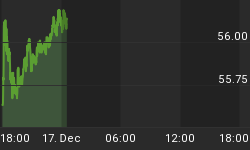Chairman Bernanke remains prudent about the state of the U.S. economy. Unemployment is an issue and the housing market is still stabilizing. German's experience shows the deficit could be considerably reduced in just one year. At the contrary, Spanish budget is under scrutiny of the financial markets.
Fed is cautions.
On TV and during his speech to the National Association of Business Economists last week, Mr. Bernanke stated nobody can be sure current improvement in the job market will last. The unemployment rate could take time to adjust to more than 200,000 jobs created each month. In effect, risk is still high, although moderating lately. Europe has improved, but more work needs to be done. Any confrontation in the Middle East could trigger oil prices again. Finally, the U.S. debt is huge and requires a titanic effort to be reduced. As a result, Fed's policy should remain accommodative, until numbers will improve well above the average for a longer period of time. QE3 is still a possibility.
The housing market is bottoming. Nonetheless, results vary greatly among different states and cities. Housing starts have increased since last summer, but most multi-units are not sold. They are instead rented, as households are probably still lacking the confidence to invest in the sector. Single starts have been basically unchanged for over two years. As an example, November and December were positive, while January and February were overall negative. A mild winter might have supported sales. The S&P/Case Shiller report confirms prices are still falling and reseals are mild.


In reality, it will take some time to bring the housing market back on track, after the terrible slump of the past years. Since 1969, prices topped roughly every 9 years (1969, 1981, 1990, 1999 and 2007). From top to bottom, declines lasted for about 2 years (69/71, 81/83, 90/92, 07/09 (?). New highs were reached after 3/5 years from the bottom.
German's deficit reduced.
Last week, the Eurogroup raised the EFSF and the ESM funds to euro 700 billion from euro 500 billion. It is just a minimum, considering euro 200 billion will be used for the bailouts of Greece, Ireland and Portugal. The rescue fund will start on July 2012, but will be fully operational in 2014. In the meantime, the Spanish finances could get out of control, despite the help of the 3-year LTRO program. Markets are concerned about the magnitude of 2011 budget overruns, especially in the autonomous regions. The public deficit is now 8.5% of the G.D.P., compared to the expected 6.0%. As a result, the Spanish 10-year government bond yields rose to 5.55%, up from 4.8% shown in March. Eur/Usd is oscillating between 1.35/1.26. A breakout of the boundaries could set the trend for the next few months.
While the southern European states are struggling for survival, the northern countries continue with their good economic performance. The German government, as an example, was able to reduce the deficit considerably in 2011 to euro 17 billion from euro 44 billion in 2010. The deficit should increase again in 2012, since Germany has just paid about euro 9 billion, out of a total of about euro 22 billion, for its equity contribution to the European Stability Mechanism (ESM). Germany expects the deficit to decline to 0 in 2016. However, results will depend on the strength of the economy. The president of the German Bundesbank sees high risks of heterogeneity inside the euro zone and warns about inflation rising again. Mr. Weidman is not happy with current monetary policy and few weeks ago indicated consultations on ECB's exit strategy are under way.
In effect, during the past three years, economic discrepancies among European states have strongly increased. The E.C.B. could have some problems facing a new economic slowdown. In Europe, the monetary policy is a tedious decision-making process that must be implement only trough a large majority. Consensus will be more difficult to be achieved in the future and E.C.B. president could be asked to step-up and exercise his authority. Fiscal and structural reforms within the euro zone cannot be postponed forever.















